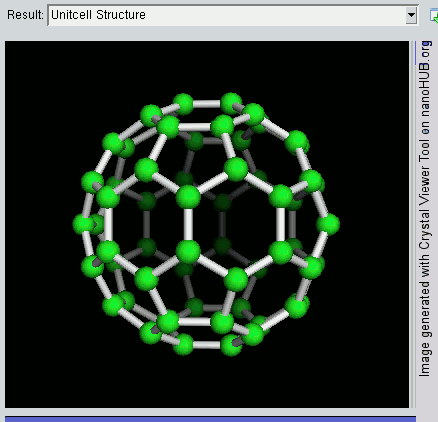|
Dustiness
Dustiness may be defined as the propensity of a finely divided solid to form an airborne dust (aerosol) from a mechanical or aerodynamic stimulus. Dustiness can be influenced by particle morphology (shape), size, and inter-particle forces. Dustiness increases the risk of inhalation exposure. Dusty materials tend to generate aerosols with high particle concentrations measured in number or in mass. The tendency of powdered materials to release airborne particles under external energies indicates their dustiness level. The dusty level of powders directly affects worker exposure scenarios and associated health risks in occupational settings. Powder-based aerosol particles can pose adverse effects when deposited in human respiratory systems via inhalation. Motivation A significant motivation for quantifying and measuring the dustiness of materials comes from the area of workplace health and safety. The potential health impacts of suspended particles, particularly by inhalation, c ... [...More Info...] [...Related Items...] OR: [Wikipedia] [Google] [Baidu] |
Aerosol
An aerosol is a suspension (chemistry), suspension of fine solid particles or liquid Drop (liquid), droplets in air or another gas. Aerosols can be generated from natural or Human impact on the environment, human causes. The term ''aerosol'' commonly refers to the mixture of particulates in air, and not to the particulate matter alone. Examples of natural aerosols are fog, mist or dust. Examples of human caused aerosols include particulate air pollutants, mist from the discharge at hydroelectric dams, irrigation mist, perfume from Spray nozzle, atomizers, smoke, dust, Pesticide, sprayed pesticides, and medical treatments for respiratory illnesses. Several types of atmospheric aerosol have a significant effect on Earth's climate: volcanic, desert dust, sea-salt, that originating from biogenic sources and human-made. Volcanic aerosol forms in the stratosphere after an eruption as droplets of sulfuric acid that can prevail for up to two years, and reflect sunlight, lowering tempera ... [...More Info...] [...Related Items...] OR: [Wikipedia] [Google] [Baidu] |
Aerodynamics
Aerodynamics () is the study of the motion of atmosphere of Earth, air, particularly when affected by a solid object, such as an airplane wing. It involves topics covered in the field of fluid dynamics and its subfield of gas dynamics, and is an important domain of study in aeronautics. The term ''aerodynamics'' is often used synonymously with gas dynamics, the difference being that "gas dynamics" applies to the study of the motion of all gases, and is not limited to air. The formal study of aerodynamics began in the modern sense in the eighteenth century, although observations of fundamental concepts such as aerodynamic drag were recorded much earlier. Most of the early efforts in aerodynamics were directed toward achieving Aircraft#Heavier-than-air – aerodynes, heavier-than-air flight, which was first demonstrated by Otto Lilienthal in 1891. Since then, the use of aerodynamics through mathematical analysis, empirical approximations, wind tunnel experimentation, and computer si ... [...More Info...] [...Related Items...] OR: [Wikipedia] [Google] [Baidu] |
Occupational Dust Exposure
Occupational dust exposure occurs when small particles are generated at the workplace through the disturbance/agitation of rock/mineral, dry grain, timber, fiber, or other material. When these small particles become suspended in the air, they can pose a risk to the health of those who breath in the contaminated air. There are many dust-producing activities across a broad range of industries, including agriculture, construction, forestry, and mining. As such, the nature of occupational dust exposures can vary greatly by chemical composition, size, concentration, and toxicity to humans. Depending on the source, dust composition can include mineral dusts, heavy metals, respiratory sensitizers (chemicals that can cause allergic reactions such as asthma), chemical dusts, molds, spores, and more. Particles generated at workplaces can range in size from microscopic nano-particles (< 0.1 μm) to large, visible dust (50 - 100μm). The concentration of these exposures are affected by their ... [...More Info...] [...Related Items...] OR: [Wikipedia] [Google] [Baidu] |
Occupational Safety And Health
Occupational safety and health (OSH) or occupational health and safety (OHS) is a multidisciplinary field concerned with the safety, health, and welfare of people at work (i.e., while performing duties required by one's occupation). OSH is related to the fields of occupational medicine and occupational hygiene and aligns with workplace health promotion initiatives. OSH also protects all the general public who may be affected by the occupational environment. According to the official estimates of the United Nations, the '' WHO/ ILO'' ''Joint Estimate of the Work-related Burden of Disease and Injury'', almost 2 million people die each year due to exposure to occupational risk factors. Globally, more than 2.78 million people die annually as a result of workplace-related accidents or diseases, corresponding to one death every fifteen seconds. There are an additional 374 million non-fatal work-related injuries annually. It is estimated that the economic burden of o ... [...More Info...] [...Related Items...] OR: [Wikipedia] [Google] [Baidu] |
Nanomaterials
Nanomaterials describe, in principle, chemical substances or materials of which a single unit is sized (in at least one dimension) between 1 and 100 nm (the usual definition of nanoscale). Nanomaterials research takes a materials science-based approach to nanotechnology, leveraging advances in materials metrology and synthesis which have been developed in support of microfabrication research. Materials with structure at the nanoscale often have unique optical, electronic, thermo-physical or mechanical properties. Nanomaterials are slowly becoming commercialized and beginning to emerge as commodities. Definition In ISO/TS 80004, ''nanomaterial'' is defined as the "material with any external dimension in the nanoscale or having internal structure or surface structure in the nanoscale", with ''nanoscale'' defined as the "length range approximately from 1 nm to 100 nm". This includes both ''nano-objects'', which are discrete pieces of material, and ''nanostructu ... [...More Info...] [...Related Items...] OR: [Wikipedia] [Google] [Baidu] |
National Institute For Occupational Safety And Health
The National Institute for Occupational Safety and Health (NIOSH, ) is the List of United States federal agencies, United States federal agency responsible for conducting research and making recommendations for the prevention of work-related occupational injury, injury, occupational disease, illness, disability, and occupational fatality, death. Its functions include gathering information, conducting scientific research both in the laboratory and in the field, and translating the knowledge gained into products and services.About NIOSH National Institute for Occupational Safety and Health. Among NIOSH's programs are determination of recommended exposure limits for toxic chemicals and other hazards, field research such as the Health Hazard Evaluation Program, epidemiology and health surveillance programs such as the National Firefighter Re ... [...More Info...] [...Related Items...] OR: [Wikipedia] [Google] [Baidu] |
HEPA
HEPA (, high efficiency particulate air) filter, also known as a high efficiency particulate arresting filter, is an efficiency standard of air filters. Filters meeting the HEPA standard must satisfy certain levels of efficiency. Common standards require that a HEPA air filter must remove—from the air that passes through—at least 99.95% (ISO, European Standard) or 99.97% (ASME, U.S. DOE) of particles whose diameter is equal to 0.3 μm, with the filtration efficiency increasing for particle diameters both less than and greater than 0.3 μm. HEPA filters capture pollen, dirt, dust, moisture, bacteria (0.2–2.0 μm), viruses (0.02–0.3 μm), and submicron liquid aerosol (0.02–0.5 μm). Some microorganisms, for example, ''Aspergillus niger'', '' Penicillium citrinum'', ''Staphylococcus epidermidis'', and ''Bacillus subtilis'' are captured by HEPA filters with photocatalytic oxidation (PCO). A HEPA filter is also able to capture some viruses and ba ... [...More Info...] [...Related Items...] OR: [Wikipedia] [Google] [Baidu] |
Pollution
Pollution is the introduction of contaminants into the natural environment that cause harm. Pollution can take the form of any substance (solid, liquid, or gas) or energy (such as radioactivity, heat, sound, or light). Pollutants, the components of pollution, can be either foreign substances/energies or naturally occurring contaminants. Although environmental pollution can be caused by natural events, the word pollution generally implies that the contaminants Human impact on the environment, have a human source, such as manufacturing, Extractivism, extractive industries, poor waste management, transportation or Agricultural pollution, agriculture. Pollution is often classed as point source pollution, point source (coming from a highly concentrated specific site, such as a factory, Environmental effects of mining, mine, construction site), or nonpoint source pollution (coming from a widespread distributed sources, such as microplastics or agricultural runoff). Many sources of po ... [...More Info...] [...Related Items...] OR: [Wikipedia] [Google] [Baidu] |




